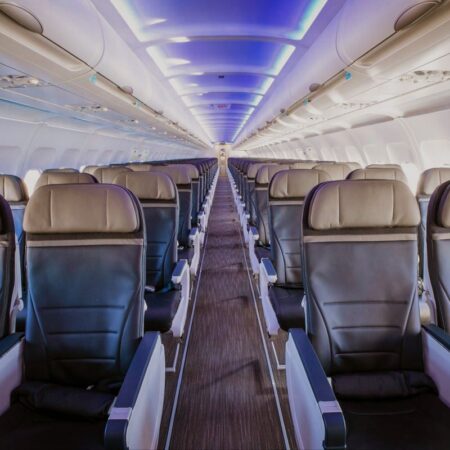
As global awareness of climate change grows, travelers around the world are becoming more conscious of their environmental impact. Air travel, while convenient and essential for international mobility, contributes significantly to global carbon emissions. For Nigerian travelers and global citizens alike, this creates a modern dilemma, how can we explore the world without harming it?
The good news is that travel doesn’t have to come at the expense of the planet. Through mindful choices and eco-conscious planning, you can significantly reduce your carbon footprint while flying. Green travel isn’t about avoiding flights altogether; it’s about making smarter, more sustainable decisions before, during, and after your journey.
This article explores practical ways to book flights with lower carbon emissions, understand how airlines are adopting sustainable aviation practices, and learn how you can play a part in promoting eco-friendly travel. By the end, you’ll not only know how to make greener flight choices but also how to travel responsibly without sacrificing comfort or convenience.
Understanding the Carbon Footprint of Air Travel
Every time a plane takes off, it burns jet fuel that releases carbon dioxide (CO₂) and other greenhouse gases into the atmosphere. These emissions contribute to global warming and environmental degradation. The longer the flight, the greater the emissions.
According to the International Air Transport Association (IATA), the aviation industry is responsible for about 2-3% of global carbon emissions. While that may seem small, its impact is magnified because emissions from high altitudes have a greater warming effect.
For the conscious traveler, this means that choosing how, when, and with whom you fly can make a real difference. By understanding which factors influence your flight’s carbon output, you can make smarter booking decisions that align with your sustainability goals.
Why Green Travel Matters
Green travel is more than a trend, it’s a responsibility. As travelers, our choices influence airline policies, fuel efficiency practices, and even the pace of innovation in sustainable aviation technology. When travelers consistently choose greener options, airlines are encouraged to adopt cleaner fuels, operate more efficient fleets, and reduce waste.
Sustainable flying doesn’t only benefit the planet, it also supports long-term travel affordability and accessibility. A cleaner environment means fewer disruptions caused by extreme weather, better air quality for destination communities, and a healthier planet for future generations to explore.
How to Book Flights with Lower Carbon Emissions
Building a sustainable travel habit starts with how you choose and book your flights. Below are practical steps and expert tips to help you make eco-friendly flight choices every time you travel.
1. Choose Direct Flights Whenever Possible
Takeoffs and landings consume the most fuel. Every time a plane climbs to cruising altitude or descends, it burns a significant amount of energy. By booking direct flights instead of connecting ones, you reduce the number of takeoffs and landings, which in turn lowers total emissions.
For instance, a direct flight from Lagos to London emits less CO₂ than a flight from Lagos to London with a stopover in Dubai or Doha. Though direct flights may cost slightly more, the environmental impact is significantly smaller.
2. Fly with Fuel-Efficient Airlines
Not all airlines are equally eco-friendly. Some have invested heavily in modern aircraft that use less fuel and emit fewer pollutants. Airlines like Qatar Airways, Emirates, KLM, and British Airways have introduced next-generation planes such as the Boeing 787 Dreamliner and Airbus A350, which are designed for maximum fuel efficiency.
When booking, look up the type of aircraft being used for your route. Choosing newer models can reduce your individual carbon footprint by up to 25%.
3. Select Economy Class
Flying in economy isn’t just more affordable—it’s also more sustainable. Because more passengers share the same amount of fuel, the per-person carbon footprint is smaller in economy class compared to business or first class. Premium seats take up more space and weight, increasing the carbon emissions per traveler.
If sustainability matters to you, economy class is the greenest way to fly.
4. Use Carbon Emission Calculators
Many online travel platforms and airline websites now display estimated CO₂ emissions for each flight. Websites like Google Flights and Skyscanner allow you to compare flight options not only by price and duration but also by environmental impact.
If your preferred platform doesn’t show emissions, you can use independent tools like the ICAO Carbon Emissions Calculator to estimate your flight’s footprint.
5. Offset Your Carbon Emissions
Carbon offsetting allows travelers to compensate for their flight’s emissions by funding projects that reduce or capture carbon elsewhere, such as tree planting, renewable energy, or conservation programs. Many airlines now offer carbon offset options during the booking process.
While offsetting doesn’t eliminate your emissions directly, it’s an effective way to contribute to global sustainability efforts. Make sure to choose verified carbon offset programs that are transparent and certified by reputable organizations.
6. Travel Light
The heavier a plane is, the more fuel it consumes. Packing light not only makes your travel more convenient but also helps reduce the aircraft’s total weight and carbon output. Every kilogram saved contributes to lower emissions.
When preparing for your trip, carry only essentials and avoid overpacking. This small step, multiplied by thousands of passengers, makes a noticeable difference.
7. Book with Eco-Conscious Travel Agencies
Partnering with a reliable agency like Oramus Travel Services can help you identify environmentally friendly flight options. Professional travel advisors have access to insider tools and airline data that highlight sustainable flight routes, efficient carriers, and offset programs.
Booking through an experienced agency ensures that your travel choices align with both your budget and your green travel goals.
Beyond the Flight: Additional Sustainable Travel Habits
Green travel doesn’t stop once you land. To truly embrace eco-friendly tourism, consider extending your sustainability practices to other aspects of your trip:
- Choose Green Accommodation: Stay at hotels with sustainability certifications, renewable energy use, and waste reduction policies.
- Use Public Transport: Instead of taxis or private cars, use buses, trains, or bicycles to explore.
- Reduce Plastic Use: Carry a reusable water bottle, cutlery, and shopping bag to minimize waste.
- Support Local Communities: Buy from local artisans, dine at locally-owned restaurants, and participate in cultural activities that give back to the community.
By adopting these habits, you contribute to environmental protection while supporting sustainable economic growth in your destination.
How Airlines Are Moving Toward Sustainable Aviation
The aviation industry is rapidly evolving to address climate challenges. Many major airlines are investing in Sustainable Aviation Fuel (SAF) made from renewable resources such as plant waste, algae, or recycled oils. SAF can reduce carbon emissions by up to 80% compared to traditional jet fuel.
Additionally, airlines are modernizing fleets, improving flight routes for efficiency, and introducing waste management initiatives onboard. Some carriers are even experimenting with electric and hybrid aircraft for short-haul flights.
As travelers demand greener options, these innovations will continue to grow, making sustainable air travel more accessible and affordable for everyone.
The Role of Travelers in Promoting Green Travel
Travelers have a powerful role to play in shaping the future of sustainable aviation. Every choice you make—whether booking an eco-friendly flight, offsetting your emissions, or supporting green airlines—sends a message that sustainability matters.
When large numbers of travelers prefer low-emission options, airlines and travel agencies are motivated to prioritize green policies, expand sustainable routes, and adopt cleaner technologies. In this way, your decisions directly contribute to a global movement toward responsible travel.
Green travel is not about giving up the joy of exploration, it’s about embracing it responsibly. As a modern traveler, you have the ability to make choices that protect the environment while still experiencing the beauty of the world. By booking direct flights, choosing fuel-efficient airlines, offsetting your emissions, and traveling light, you can significantly reduce your carbon footprint and inspire others to do the same.
Sustainability is not just a global goal; it’s a personal journey. Each eco-conscious decision you make contributes to cleaner skies, healthier ecosystems, and a more balanced planet. Whether you are flying for business, study, or leisure, your commitment to green travel ensures that future generations will have the same opportunity to explore the world we cherish today.
If you’re ready to book your next trip responsibly, choose an agency that understands both your travel needs and your environmental values.
Fill this FORM to book your flight today.








No Comment! Be the first one.